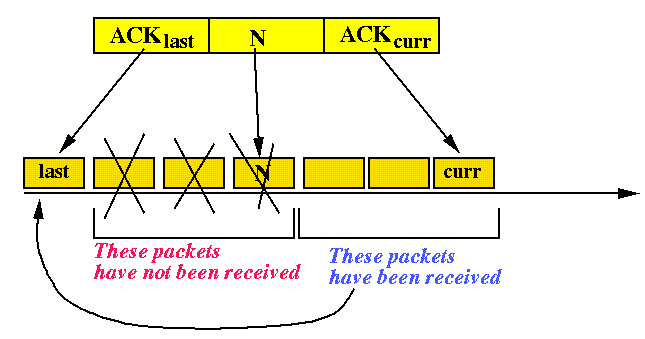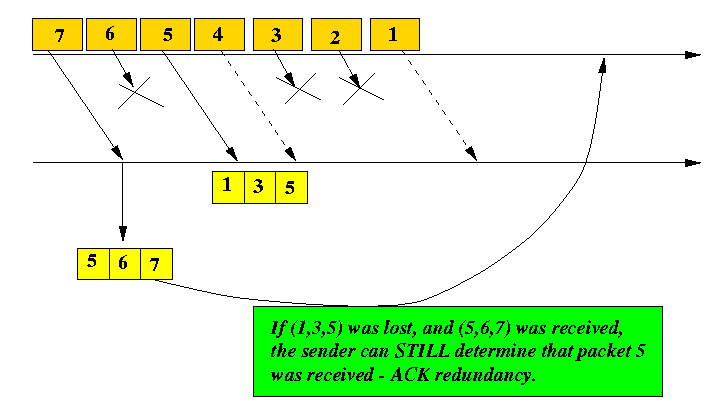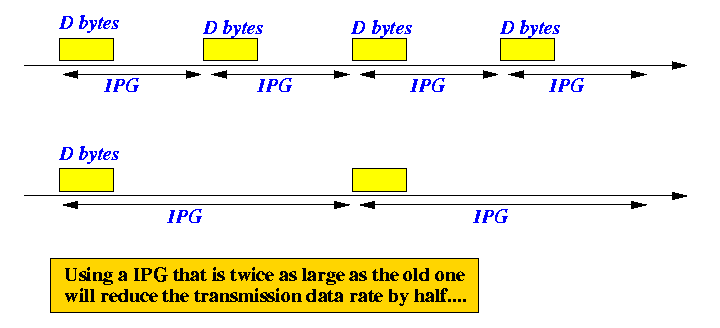We will study a stream based transfer protocol called RAP by Reza Rajaie, Mark Hendley and Deborah Estrin.
- RAP: An End-to-End Rate-based Congestion Control Mechanism
for Realtime Streams in the Internet
click here
This paper appeared in IEEE Infocom network conference in 1999.
- A more extensive tech report is available here:
click here
I suggest you read the tech report instead. The Infocom paper contains very little technical details about the method, and contains mainly description of the results.
- A stream is an unreliable data flow
- Think of a stream as a UDP connection if you will....
- Receiver(s) can still return feedback information
to the sender, but these feedback information are
not used to solicit retransmission -
rather, they are used to adjust transmission rate
to improve performance
(Recall that you can adjust the transmission rate of multimedia streams in various ways - increase compression, reduce frame rate or reduce frame size....)
- A stream transmission protocol will transmit packets at
regular intervals

- The interval depends on:
- Target data rate
- Maximum packet size
- Example:
- Target data rate = 100 K bps
- Maximum packet size = 10 K bits (~ 1.125 K Byte)
- Transmission interval = 10 packets per sec = 1 packet in 0.1 sec = 0.1 sec interval
- The ACK mechanism of TCP doubles as a built-in pacing mechanism
that automatically slows TCP's transmission data rate
down when the network shows some sign of congestion:
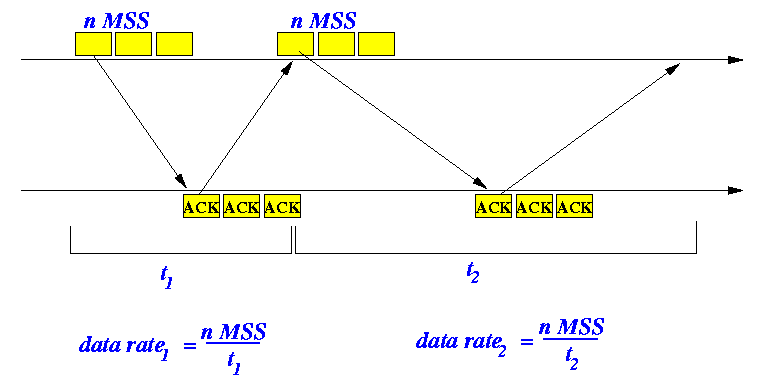
- Stream based transmission does not use ACK to pace
the transmission of packets:
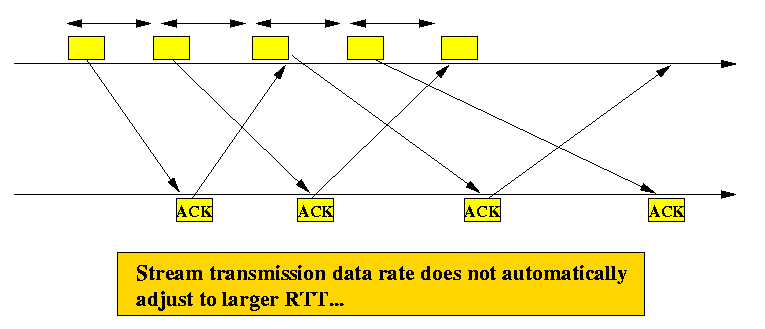
The pace of transmission is controlled by the MPEG encoder (frame rate, frame size, compression parameters, etc).
- RAP adjust the transmission rate in a similar way as TCP
(to make it "TCP-friendly")
- When RAP determines that there is network congestion,
it reduces the transmission rate multiplicatively.
- When RAP determines that there is no network congestion, it "periodically" increases the transmission rate additively.
- Also similar to TCP: packet loss
RAP uses 2 mechanisms to determine packet loss...
- If the receiver has not returned an ACK for some packet
after a "long time", the sender assumes it is lost.
- The sender can also receives an ACK packet (from the receiver)
that explicitly indicates that some packet is lost.
NOTE: ACK packets are not used to request retransmission. They are used to signal congestion condition.
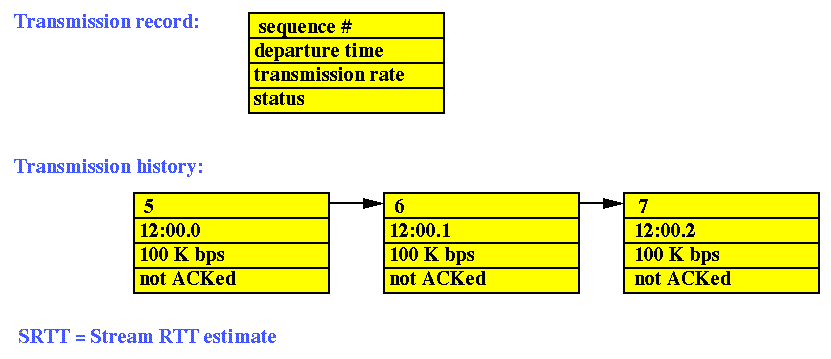
- Transmission history: a list of transmission records
containing information of outstanding packets
- SRTT: the RTT estimate maintained by RAP. SRTT is used to determined is a packet is lossed
- Uses the "Jacobson/Karels formula" to estimate RTT (this method
is used in TCP to estimate RTT)
- This method maintains a "running" estimate of the mean
and variation (standard deviation) of the measured
RTT of the packets.
- The timeout used is computed using a formula of
the mean and variation of the RTT.
- Maintaining the running estimate of the mean (SRTT)
and variation (varRTT) of SRTT:
When a new sample of RTT is obtained, the new RTT estimate is computed as follows:
- SRTTi+1 = (1 - DELTA) * SRTTi + DELTA * sampleRTT
- DELTA is a value between 0.0 and 1.0
(recommended: DELTA = 1/8)
- Difference = NewSampleRTT - SRTTi
- varRTTi+1 = varRTTi + DELTA*Difference
- Timeout value used:
- Timeout = MU * SRTT + PHI * varRTT
- Recommended: MU = 1 and PHI = 4
- Timeout = MU * SRTT + PHI * varRTT
- Update SRRT (using the Jacobson/Karels algorithm)
- Check for potential timeout among the packets in the transmission
history.
- If packet loss then update data rate
- Otherwise, transmit next packet

